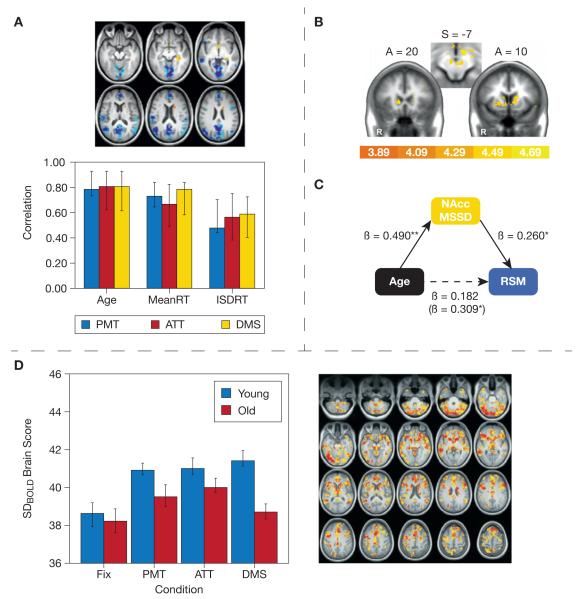Fig. 2.
Aging studies. (A) Garrett et al. (2011b): Greater BOLD signal variability in blue regions, but less in yellow regions, was associated with younger age and faster and more stable task performance across perceptual matching (PMT), attentional cueing (ATT), and delayed match-to-sample tasks (DMS). (B and C) Samanez-Larkin et al. (2010): (B) Higher BOLD signal variability in nucleus accumbens (NAcc) covaried with older age, and (C) mediated positive relations between age and risk-seeking mistakes (RSM). (D) Garrett et al. (2013): Younger adults were characterized by greater increases in BOLD variability from fixation to task (PMT, ATT, DMS), in yellow/red regions.

